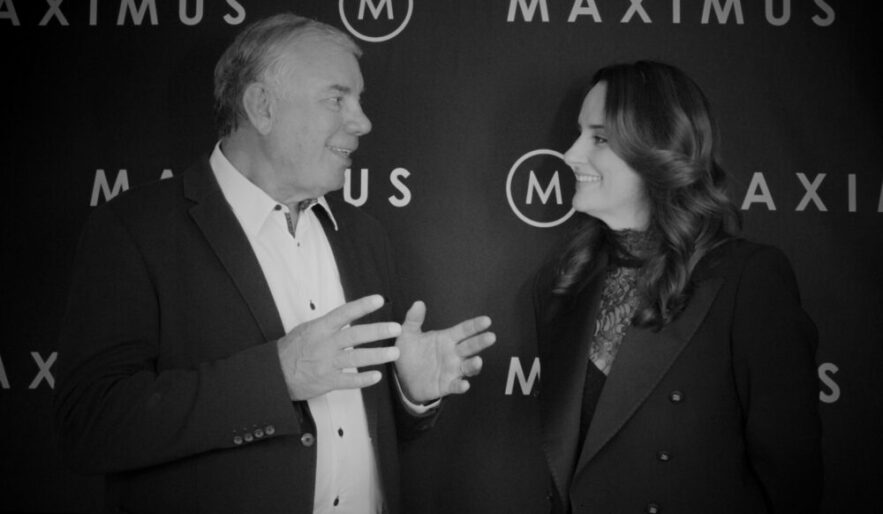“I’ve learnt how much more effective and powerful an organisation is through partnerships”
– Cameron Kerr AO, CEO of Taronga Conservation Society Australia
“I’m very passionate about conserving wildlife and that’s been the core focus for me in this role. I do seem to have a lot of energy, I’m inquisitive and I’m genuinely interested in people and their ideas, and in creating change.
I’m working to help ensure that zoos in the 21st Century are making a real impact for wildlife conservation. I also want to ensure the zoo and aquarium industry can make a significant contribution to society, and there’s power in having a number of zoos doing that together in concert. I want to help facilitate how to best leverage the unique set of skills we have within the zoo sector here and around the world.
When I came into the role of CEO I wanted to develop a strong vision of where we should be going and where society needs us to go. For the first four or five years, I was very focussed on building our team and articulating our vision really clearly. We worked as an executive group in facilitated sessions and asked ourselves what is Taronga’s role in the 21st Century?
Knowing that the zoo plays across conservation, science, education and tourism, it was important for those of us in the executive group to understand our niche in the puzzle that makes up the bigger picture of wildlife conservation.
I think the most important question I ever challenged the executive on, was to say “given that there are huge players like Disney in tourism, CSIRO in science, WWF in conservation, and universities in education, was there really a role for Taronga in the 21st Century or are we just a big player? It was great because everyone got fired up and really examined where we added genuine value as a conservation-based zoo and how we could contribute to the bigger picture.
We invested in our staff to take them on a journey that would both make us stronger as an organisation, and also to deal with areas where we hadn’t been comfortable. Over the years we’ve worked with Maximus on a range of areas. As an executive group, we know we each have our strengths and weaknesses, but it was important to get that out on the table. Supporting each other means we are all successful. It took courage as we all had to be honest, but I remember it being an important point for our leadership team as a group.
For me, as I’m sure for many managers, stepping back a bit is the hardest part of the journey. We’re a 24/7, 365 days a year operational organisation, a very roll-the-sleeves-up sort of organisation. In the past three or four years I have really made a conscious effort to formally delegate responsibility for operations more broadly. Then it’s obvious when you don’t step back that you’re treading on people’s toes. And you need to have people who are willing to tell you!
“There’s lots of energy in our executive team… it’s part of the culture now that we won’t rest on our laurels. Whether it’s animal welfare, our work in conservation or physical elements of our two zoos.”
– Cameron Kerr AO
One of the big challenges in an organisation that’s always up for change is making sure that you have people that are really good operationally. You simply can’t let that side of the business fall over, ever. You see it in the private sector a lot – the growing pains of organisations as they go through adolescence. They’re growing too fast. The systems, structures and governance processes are just not keeping up. As a leader it comes back to identifying where your strengths and your natural biases are, and making sure that you’ve got people in the team whose strengths and biases cover for each other. I find that’s very, very important.
Understanding the true value of diversity has also been a part of my own leadership journey. I’ve been learning about its importance my whole career, but as CEO making the right decisions is more critical than ever, so you really see first-hand the value in a diversity of perspectives and ideas. It just can’t be a lot of old white guys like me! Selecting good people for the team is obviously important, but it’s equally important to add people who bring different skills and even different working styles.
I’ve also learnt how much more effective and powerful an organisation is through partnerships – we partner locally and globally with universities, conservation and science organisations – and those ecosystems enable us to perform at a much higher capacity than we could on our own, which in turn means we have greater impact for our purpose.
A good example is the partnership we’ve had since 2011 with the Smithsonian Institute, the Australian Institute of Marine Science (AIMS) and the Great Barrier Reef Foundation to apply cryoconservation technologies to reef management, restoration and research, focusing on keystone coral reef species. This is critical to ensure we can re-seed sections of reef with appropriate species following bleaching events. Taronga has numerous partnerships, that span researching the behaviour of cockatoos in urban environments and tackling threats to endangered Australian animals, such as the Greater Bilby, to projects supporting the conservation of rhinos, lions, giraffes, Sumatran tigers and elephants.
As I said, we’re constantly thinking about how Taronga and the zoo and aquarium industry can make a significant contribution to society. As the Zoo and aquarium sector we’ve been able to move away from it just being about our zoo, to realise the power of having a number of zoos working together in concert. One of the things I’m most proud of as a CEO in our global region is that the CEOs of key Australian and New Zealand zoos work almost as a senior management team. There are four or five of us who talk regularly – we get along well, and we can work as an executive on the zoo and aquarium industry for Oceania. We can and do lead the world on animal welfare and implementation of sustainability strategies. We certainly don’t have the dollars that our colleagues in North America and Europe do, but we work together collaboratively and we’re agile.
I also see a key part of my role today is looking outside the zoo industry as much as I do in. When you’re able to do that in a physical sense, and visit people ‘on their turf’, you really get to see how they work and gain insights to take back and reimagine for our sector.
There’s lots of energy in our executive team… it’s part of the culture now that we won’t rest on our laurels. Whether it’s animal welfare, our work in conservation or physical elements of our two zoos.
Among the things I’m proud of is how at Taronga we’ve brought together science and education. Its physical manifestation is the Taronga Institute of Science and Learning. The institute has really leveraged the talent in wildlife conservation from both inside and outside our organisation and is making an impact. But it’s even more than that. Whether it’s animal welfare, the way we work in conservation or the physical elements of the organisation, we know we can always be better. We ask ourselves, ‘In 25 years’ time, how will people view the way we care for our animals and decisions we make?’ So, we talk about it all the time and we use every bit of information that we can get our hands on so that we are making the very best decisions we can now.”







